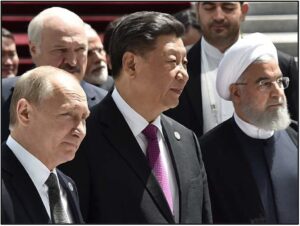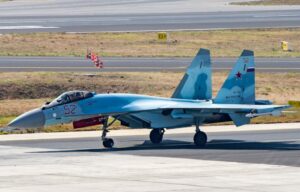I’m a writer of “hot-takes”. Ideally well-researched hot-takes, but hot-takes nonetheless. That’s my niche here in the beautiful ecosystem of The Roundup. But it’s time for me to voice an especially unpopular opinion of mine: yes, we should be more heavily involved in the Middle East.
Our adventures in the Middle East have always been a messy subject. We tried to facilitate an orderly regime change in Iraq for 8 years and failed. But with Iran now openly refusing to directly negotiate over its nuclear weapons program, something has to give. Either Iran gives up its program, or they lose it in a series of airstrikes anyways. But I would argue we need to go further. We need to pursue regime change in Iran.
So your favorite hawkish columnist is here again with a humble suggestion: bombing Iran’s the thing to do. Not just their nuclear sites. The whole regime. What’s my 5-point plan? Why should we do it? How should we do it? When should we do it? All this and more on the first and only episode of “War Hawk Weekly”.
Why?
This is a big assertion. The last time we engaged in a Middle Eastern regime-change, it didn’t go so well. But before I address how this wouldn’t be another Iraq, I need to address three things: a. why such an action would be justified, b. how to go about said action, and c. why we should commit to it.
What’s the Plan?
So what exactly would need to be done to bring about the fall of the Iranian Regime? We need to plan with the lessons of Iraq in mind. So what caused that disaster? The answer is a single, hyphenated word: de-Ba’athification. That was a policy that entailed dismantling the Iraqi Army for its ties to Saddam Hussein, firing/arresting all the bureaucrats who worked for Saddam Hussein, and (in practice) oppressing all the Sunnis who supported Saddam Hussein. You may have noticed that, when you shoot/fire all the people who ran the country, you no longer have anyone running the country. When you disband the Iraqi Army, you create hundreds of thousands of radicalized, angry, unemployed young men with unsupervised access to army-issue firearms. And when you oppress Saddam’s Sunni Muslim base, you encourage them to start shooting at you.

So what you need to do is get “the people” to do the overthrowing for you (so as to minimize boots on the ground). You need to preserve the basic structures of Iranian government until they can be gradually reformed, so as to avoid chaos on the administrative level. You need to destroy the Iranian Revolutionary Guards Corps and the Basij (a government-sanctioned paramilitary) to excise those devoted to the regime from the security forces. You need to preserve the less-radicalized regular Iranian Army to prevent Iraq-style chaos. And lastly, you need to craft a unifying government that protects the rights of the religious individuals who keep the current regime afloat, so as to prevent a massive insurgency.
With all that factored in, I’d argue only a handful of things need to be done to replace the Islamic Republic with a competent government. No boot-to-ground contact needed.

1] Wait for the Iranian Government to Spark Protests Against Itself- We need a pre-existing protest movement to attach our air campaign to. The good news is that this step is a given. Every 3-4 years, Iran does something stupid that causes mass unrest. Be it murdering a 22-year-old Kurdish girl or rigging the 2009 election, Iran will do something silly. The last one was in 2022, so they’re due soon.
2] Cripple the leadership, IRGC, and Basij- As these protests pick up steam, the job of the US (and probably Israeli) Air Force is to prevent any crackdown. As a paralyzing measure, we need to decapitate the Iranian government to whatever extent possible. And to neutralize any resistance to this mass-uprising, we need to destroy the IRGC, Basij, and more dedicated elements of Iran’s military. Without those, any protests will spiral out of the regime’s control.
3] Fly Reza Pahlavi back to Iran- We want to avoid a fractured, chaotic revolution filled with bickering communists and far-right forces. The revolution needs a single, unifying face. That face is Reza Pahlavi, exiled Crown Prince of Iran. He will act as the Ayatollah Khomeini did when Pahlavi’s father was overthrown in 1979: a unifying, likeable face for the people to rally around.

4] Sit Back and Watch- This is the part where the Iranian Regime collapses under the weight of its own, unified populous. The underpaid conscripts of the regular Iranian Army likely won’t intervene, and if they do, they’ll be struck as necessary. Without paramilitary support, local police will be overwhelmed and give in.
5] Form a parliament and continue the transition- With the government overthrown, it’s now time to establish an Iranian democracy (probably some kind of constitutional monarchy) and carry out elections. The Iranian bureaucracy will be mostly preserved and the constitution will, unlike Iraq, be thoroughly-written and protect minorities so as to prevent rebellion.
By doing these things, we can seal the fate of an Iranian government that can barely keep a lid on their populace as is. In so doing, we will have transitioned Iran to democracy in a rapid, semi-orderly fashion. And we’ll have done it all with no ground troops in the country.
A Justifiable Strike
That’s all great. But is it strictly justified? Yes. Yes it is.
First off, we would have the moral high ground in any conflict with this current version of Iran for a simple reason: they started it. Ever since the Iranian Revolution of 1979, the Islamic Republic has very publicly worked toward the destruction of the United States. Their first act as an Islamist country was to take 52 hostages while storming our embassy. Since then, through its proxies, Iran has killed at least a triple-digit number of American soldiers. Every single one of the hundreds of American servicemen killed at the hands of Hezbollah or Shia militias in Iraq died not just at the hands of those organizations, but at the hands of the Iranian regime that directed them. All 251 killed at the Marine Barracks in Beirut, all of those killed during battles with the Mahdi Army in Iraq, all of them. Iran killed those boys, not just a series of unconnected terrorist groups.

Secondly, the Islamic Republic has brutally repressed its people for almost 50 years. Torture of dissidents and shuttering of social media are the norm. And when popular discontent does bubble over into mass protest, the Basij and other paramilitaries are ready with riot shields and live rounds.
This is all to say nothing of their treatment of women, which is barbaric. The world saw exactly how bad the situation was in 2022, when Mahsa Amini was beaten to death by the “Morality Police” for allegedly not wearing her hijab, sparking the largest anti-government protests in the Islamic Republic’s history, and exposing the deeply unhappy nature of the nation’s populace as a whole. Younger Iranians know exactly how crooked their government is, and exactly how the West’s quality of life compares to theirs. Perhaps 80% (according to the GAMAAN Agency) of Iranians want the regime gone. Even if that’s an overestimation, the number is certainly a majority. They want a newer, freer, more democratic government. All we’re doing is expediting the democratization process.
The Ian Malcom Angle
So we’ve established how to conduct the campaign and why it would be justified. But should we do it?
“Your scientists were so preoccupied with whether or not they could, that they didn’t stop to think if they should.” It’s one of the great quotes in cinema history because Dr. Ian Malcom’s insight has relevance to a great many situations. One of which is ours. Just because we can doesn’t mean we should. Toppling Saddam in 2003 was 100% justified, but it wasn’t the correct strategic decision. But we should destroy the terrorist government of Iran. That’s why I’m even writing this. So why do this from a cold, hard, strategic perspective?

In short, because we have an opportunity to wrench away the “soft underbelly” of a newly-formed Axis of Evil. This whole paradigm of foreign policy will probably get its own article at some point, but essentially there is a new Cold War that nobody admits is happening. It pits the Western World against an ever-formalizing alliance between our four main enemies: China, Russia, Iran, and North Korea. It is composed of the remnants of America’s old enemies, bound together no longer by communist beliefs, but by the simple shared goal of tearing down the current world order. Now, three of these four countries must be dealt with via sneakier, economic means. Those countries have nuclear weapons. But Iran doesn’t yet. If we can pull the rug out from under it, we could deal a painful military blow to the “unfree world”.

We would also damage the increasing trade between the four. A few years ago, Iran traded thousands of Shaheed drones to Russia in exchange for advanced SU-35 aircraft, for example. And on the civilian front, China recently agreed to invest $400 billion in Iran for discounted oil prices. That kind of advanced weapons trade keeps the Russian war effort afloat. And that kind of advantageous deal for oil only makes China more competitive. When we hurt Iran, we hurt the other authoritarian regimes of the world.
To Conclude
In summary, when it comes to Iran, regime change should be the goal. For various reasons, we would be justified in pursuing it, and by following this 5-point plan we could incite a revolution without ever putting American ground troops at risk. By avoiding the destruction of Iran’s governmental structures and avoiding boots on the ground, we can evade the pitfalls of Iraq and bring Iran into the Western World once more.
